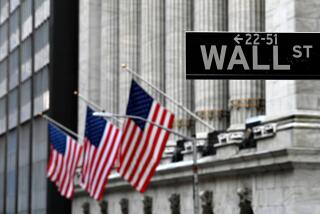Investing Overseas: It’s a Roller-Coaster World
- Share via
Those who invested in Hong Kong’s stock market at the beginning of 1992 must be feeling a bit giddy right now. In just six months, their investment turned a 32.6% profit, and it is still climbing.
Yet those who invested in Japan have been sorely disappointed. The Nikkei index of 225 stocks fell by more than 27.5% in just the first half of 1992. And it has continued to drop as Japanese investors become increasingly pessimistic about their country’s economic prospects.
Such are the risks and rewards of investing in international equities. Those who call the game just right can earn stunning profits, while those who invest in the right market at the wrong time can lose a fortune.
Still, investment experts maintain that individuals who already invest in the U.S. stock market should consider investing in foreign markets as well. That’s because international equities can help investors diversify and, over the long haul, international stocks may appreciate more than U.S. stocks.
But this is not a market for small investors who are still attempting to build up emergency funds. Nor is it a market for the timid. Someone who considers the U.S. stock market volatile would run screaming from some of the better-performing international stock markets, where prices can rise and fall 5% to 10% overnight. (A 5% drop in the Dow Jones industrial average would amount to a 160-point loss and would be considered a “crash” here. Yet similar activity at some Latin American stock exchanges is just another day at the office, investment experts maintain.)
Some particularly bullish international experts believe that Americans should invest up to 30% of their money in international markets. Others maintain a 5% foreign stake is more prudent. In reality, the proportion of international investments should probably be based on the individual’s age, financial goals, risk tolerance and assets.
“If you have decades to invest, I would put 15% to 25% of my assets in international equities. But if you’ve only got two or three years to go before retirement, I would say 5% to 15%,” said Gordon P. Wilson, executive vice president and head of international investments at Kemper Financial Services in Chicago. “On the other hand, if you’re the kind of person who worries about everything you read in the paper, forget it.”
Many experts also stress that anyone who steps into the international markets should be ready to commit themselves for at least three to five years for several reasons. Short-term currency fluctuations can trash an otherwise good investment if you have to sell in a hurry. Many international markets are relatively illiquid, which makes it tough to buy and sell quickly. And, although the long-term prospects look bright for international equities, the short-term picture is clouded by a worldwide economic malaise.
As a result, some suggest that U.S. investors “average in”--buying small stakes and gradually increasing their investment over time. Few suggest that investors wait to invest until the world economy gets on its feet, however.
“The time to buy straw hats is in January, not June,” said James Lyle, the Boston-based manager of the Fidelity Investments’ Overseas Fund. “You buy at the moment of maximum pessimism. To me, that makes this exactly the right time.”
How do you invest in foreign stocks? For most people the answer is a mutual fund.
Although it is possible to buy an individual foreign company’s shares, it’s difficult. Such investors need to overcome language barriers, time differences, currency exchange problems, high brokerage costs and deal with potential tax consequences of international investing. In addition, diversification is more important when dealing with volatile stock markets, and few people have the money to buy shares in a variety of foreign concerns without going through a mutual fund.
Still, finding the right mutual fund is also a daunting task. There are dozens of funds that invest in foreign stock markets. Some of them are “load” funds, which charge up-front sales commissions; others are no-load funds, which have no upfront charges, but do charge management fees and sometimes annual marketing fees.
Some are “closed-end” funds, which trade on U.S. stock exchanges at a premium or discount to their net asset value. Others are open-end funds, which can be bought and sold directly from the fund firm at a price equivalent to the fund’s net asset value.
Some concentrate on just one country’s equities, while others buy stock in whole regions--such as Europe or Asia--and others invest all over the globe.
Which sort of fund appeals to you will probably depend on a variety of factors, including how much you know about different parts of the world and how much risk you want to take.
Generally speaking, open-end funds are less volatile than closed-end. Global funds are a bit less risky than regional funds; and regional funds less risky than country funds. Country funds that specialize in a developing market, such as Hong Kong, Malaysia or Brazil, are among the riskiest of all--equally able to produce lofty gains or stupendous losses.
More to Read
Inside the business of entertainment
The Wide Shot brings you news, analysis and insights on everything from streaming wars to production — and what it all means for the future.
You may occasionally receive promotional content from the Los Angeles Times.










